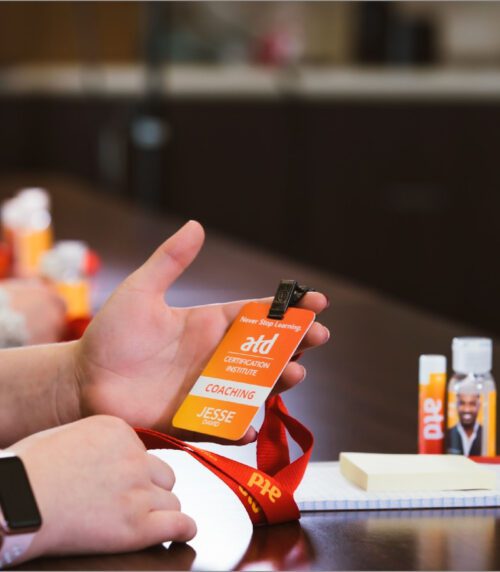
Unleashing the Power of Outdoor Team Building Activities: Enhancing Collaboration, Communication, and Camaraderie
In today’s fast-paced and technology-driven world, team building activities have become an essential component of fostering a positive and productive work environment. Among the myriad options available, outdoor team building activities have gained significant popularity due to their ability to infuse energy, engagement, and enthusiasm into organizational culture. These activities not only provide a break from the monotony of office routines but also offer a range of benefits that enhance teamwork, communication, problem-solving, and overall employee well-being.
This blog explores the importance of outdoor team building activities in modern workplaces, delving into their impact on collaboration, communication, and camaraderie. By highlighting the advantages they bring, we aim to inspire organizations to embrace these activities and harness their transformative potential.
Breaking down Barriers
In any organization, the ability of employees to collaborate effectively is vital for achieving common goals and driving success. However, barriers such as lack of trust, miscommunication, and individualistic mindsets can hinder collaboration within teams. This is where outdoor team building activities play a pivotal role. By providing a unique and engaging environment outside the confines of the office, these activities break down barriers and create opportunities for team members to come together, build trust, and foster a collaborative spirit. In this section, we will explore the importance of outdoor team building activities in enhancing collaboration within teams.
- Building Trust and Relationships: One of the primary barriers to effective collaboration is a lack of trust among team members. Outdoor team building activities offer an ideal platform for building trust as they require individuals to rely on each other, communicate openly, and work towards a common goal. Through various team challenges, problem-solving exercises, and adventure activities, employees learn to trust their colleagues’ abilities and intentions, fostering a sense of camaraderie and shared responsibility.
- Encouraging Communication and Active Participation: Effective communication is essential for collaboration to thrive. Outdoor team building activities provide an environment that encourages open and honest communication. Participants are given opportunities to express their ideas, actively listen to others, and practice effective verbal and non-verbal communication skills. From navigating an obstacle course together to solving puzzles as a team, these activities require constant communication, ensuring that team members learn to collaborate and exchange ideas in a supportive and inclusive manner.
- Cultivating a Collaborative Mindset: Outdoor team building activities help break the cycle of individualistic thinking and foster a collaborative mindset. By engaging in shared challenges, teams develop a sense of interdependence, understanding that their collective efforts are crucial for success. These activities highlight the importance of cooperation, encouraging team members to pool their skills, knowledge, and resources to overcome obstacles and achieve desired outcomes. The experiences gained through outdoor team building activities help employees recognize the power of collaboration and its positive impact on individual growth and team success.
- Enhancing Problem-Solving and Decision-Making Skills: Collaboration thrives when teams possess strong problem-solving and decision-making abilities. Outdoor team building activities present teams with complex challenges that require them to think critically, analyze situations, and make informed decisions collectively. These activities provide a safe space for teams to experiment with different problem-solving techniques, learn from failures, and develop a shared problem-solving framework. By honing these skills in a dynamic outdoor environment, teams become more adept at tackling challenges within the workplace and making well-informed decisions collaboratively.
Strengthening Communication: Effective communication lies at the heart of successful teamwork. It enables individuals to share ideas, express their needs, and collaborate towards common goals. However, communication barriers often arise within teams, hindering productivity and creating misunderstandings. In this section, we will explore how outdoor team building activities play a crucial role in strengthening communication among team members.
- Verbal and Non-Verbal Communication: Outdoor team building activities provide a unique opportunity for participants to practice and enhance both verbal and non-verbal communication skills. These activities often involve problem-solving challenges or physical tasks that require clear and concise communication among team members. By engaging in such activities, individuals learn to articulate their ideas effectively, provide clear instructions, and actively listen to others. Additionally, the outdoor setting allows for the observation and interpretation of non-verbal cues, such as body language and facial expressions, which further enhance communication accuracy and understanding.
- Building Trust and Psychological Safety: Communication thrives in an environment of trust and psychological safety. Outdoor team building activities foster trust-building among team members through shared experiences and challenges. When participants feel safe and supported, they are more likely to express their thoughts and opinions openly, leading to more authentic and productive communication. Engaging in these activities allows team members to develop a deeper understanding of each other’s strengths, weaknesses, and communication styles, further enhancing trust and creating a foundation for effective communication within the team.
- Active Listening: Active listening is a critical component of effective communication. Outdoor team building activities provide opportunities for individuals to practice and improve their active listening skills. Whether it’s following instructions, seeking clarification, or empathetically understanding the perspectives of others, active listening enables team members to engage in meaningful conversations and establish a stronger rapport. By actively listening during these activities, individuals learn to value the contributions of others, collaborate more effectively, and minimize misunderstandings that may arise from poor listening habits.
- Conflict Resolution and Feedback: Conflict is a natural part of teamwork, but how conflicts are resolved can greatly impact communication within a team. Outdoor team building activities often involve challenging situations that require teams to work through conflicts and find resolutions. These activities create a safe space for teams to practice constructive conflict resolution strategies, such as active listening, empathy, and compromise. Additionally, outdoor activities provide opportunities for teams to provide and receive feedback in a non-threatening environment. Constructive feedback enhances communication by fostering a culture of continuous improvement and open dialogue within the team.
- Enhancing Cross-Functional Communication: In many organizations, effective communication across different departments or teams can be a significant challenge. Outdoor team building activities bring together individuals from various backgrounds, roles, and departments, providing a platform for cross-functional communication. By engaging in collaborative tasks and shared challenges, individuals learn to bridge the gap between different teams, exchange ideas, and develop a common understanding of each other’s perspectives and objectives. This cross-functional communication enhances overall organizational communication and encourages a sense of unity and collaboration.
Fostering Camaraderie and Employee Well-being: Building a strong sense of camaraderie among team members is essential for a positive work environment and overall team success. Likewise, prioritizing employee well-being is crucial for maintaining a motivated and engaged workforce. Outdoor team building activities offer a unique opportunity to foster camaraderie and enhance employee well-being simultaneously. In this section, we will explore the transformative power of outdoor team building activities in promoting camaraderie and employee well-being.
- Boosting Morale and Motivation: Outdoor team building activities inject energy, fun, and excitement into the work environment, which significantly boosts morale and motivation among employees. These activities create a break from routine work, allowing team members to unwind, recharge, and engage in activities that promote enjoyment and a sense of accomplishment. By participating in challenges and overcoming obstacles together, teams develop a shared sense of achievement, fostering a positive team spirit that translates into increased motivation and commitment to their work. The adrenaline rush and the feeling of triumph create a contagious enthusiasm that spreads throughout the team, positively impacting overall morale.
- Creating Positive Memories and Shared Experiences: Outdoor team building activities create lasting memories and shared experiences that forge strong bonds among team members. When individuals engage in challenging or adventurous activities together, they develop a sense of camaraderie and trust that extends beyond the workplace. These shared experiences become stories that are retold and remembered, strengthening the connection between team members and building a supportive and cohesive team culture. The shared memories act as a powerful reminder of the team’s ability to overcome challenges together, fostering a sense of unity and creating a positive work environment where individuals feel connected and invested in each other’s success.
- Reducing Stress and Burnout: The great outdoors has a natural ability to reduce stress and promote well-being. Outdoor team building activities provide a much-needed respite from daily work pressures and enable employees to disconnect from their screens and immerse themselves in nature. Engaging in physical activities, such as hiking, team sports, or outdoor games, releases endorphins and reduces stress levels. The fresh air, sunlight, and change of scenery contribute to improved mental well-being and help prevent burnout, ultimately leading to higher job satisfaction and productivity. Outdoor activities serve as a rejuvenating escape, allowing individuals to recharge and gain perspective, reducing stress levels, and promoting a healthier work-life balance.
- Promoting Work-Life Balance: Outdoor team building activities emphasize the importance of work-life balance by encouraging employees to prioritize their well-being and personal lives. By taking the time to engage in these activities, employees experience a break from their regular work routines, allowing them to recharge and find balance. These activities send a powerful message that the organization values the holistic well-being of its employees, leading to increased loyalty and a healthier work-life integration. Outdoor team building activities serve as a reminder that employees are not just their job titles, but individuals with personal lives, hobbies, and interests. This recognition enhances employee satisfaction, fosters a sense of appreciation, and creates a positive work culture that values and supports work-life balance.
- Strengthening Social Connections and Collaboration: Outdoor team building activities provide an ideal platform for team members to interact in a relaxed and informal setting, strengthening social connections and fostering collaboration. Engaging in these activities encourages individuals to step out of their comfort zones and engage with colleagues from different departments or levels within the organization. Through shared challenges, problem-solving, and collaboration, team members develop a deeper understanding of each other’s strengths, talents, and perspectives, creating a stronger foundation for collaboration and teamwork within the workplace. The informal setting allows for genuine connections to form, breaking down hierarchical barriers and promoting open communication and trust among team members.
- Promoting a Healthy Lifestyle: Outdoor team building activities often involve physical challenges and adventure-based tasks that promote a healthy lifestyle. From hiking and cycling to team sports and obstacle courses, these activities encourage employees to be physically active, which has numerous benefits for their overall well-being. Regular physical activity improves cardiovascular health, reduces the risk of chronic diseases, boosts energy levels, and enhances mental clarity. Engaging in these activities as a team fosters a culture of wellness, inspiring team members to adopt healthier habits both inside and outside of work. Moreover, the sense of accomplishment and personal growth that comes with conquering physical challenges during outdoor activities boosts self-esteem and overall well-being.
Understanding Capabilities during Outdoor Activities: Outdoor team building activities not only provide an opportunity for teams to bond and enhance their well-being but also serve as a platform for understanding and unleashing the full capabilities of team members. These activities present unique challenges that require individuals to tap into their skills, talents, and strengths. In this section, we will delve into how outdoor activities facilitate the understanding of capabilities and enable teams to unlock their full potential.
- Identifying Strengths and Talents: Outdoor team building activities often involve problem-solving tasks and physical challenges that require various skills and talents. These activities provide a platform for individuals to showcase their unique strengths and talents, allowing team members to gain a deeper understanding of each other’s capabilities. For example, a high ropes course may reveal who excels in risk-taking and problem-solving, while a team-building game may highlight individuals with strong leadership or communication skills. By engaging in these activities, teams can identify the diverse range of skills and talents within their group, enabling them to leverage these capabilities for enhanced teamwork and task allocation in the workplace.
- Unleashing Leadership Potential: Outdoor team building activities offer a fertile ground for the emergence of leadership potential within teams. As individuals face unfamiliar challenges and decision-making scenarios, natural leaders often step forward, taking charge and guiding their team members. These activities provide an opportunity for individuals to showcase their leadership capabilities in a non-work-related setting, where they can experiment, learn, and develop their leadership skills. By recognizing and encouraging leadership potential during outdoor activities, teams can identify future leaders within their ranks and nurture their growth for future organizational success.
- Cultivating Problem-solving and Adaptability: Outdoor activities often present teams with unexpected situations and obstacles that require quick thinking, problem-solving, and adaptability. Teams must assess the situation, develop strategies, and adjust their plans as needed. Engaging in these activities sharpens problem-solving skills and encourages individuals to think outside the box. It also reveals how team members react and adapt to unexpected circumstances. Some individuals may excel in devising innovative solutions, while others may demonstrate resilience and adaptability. Understanding these capabilities enables teams to allocate responsibilities effectively and make the most of each team member’s problem-solving and adaptability skills.
- Enhancing Communication and Collaboration Styles: Outdoor team building activities provide a valuable platform for understanding different communication and collaboration styles among team members. As individuals engage in these activities, they learn to adapt their communication approaches to effectively convey their ideas and receive input from others. Some team members may prefer direct and assertive communication, while others may excel in active listening and collaboration. Recognizing and understanding these diverse styles fosters better communication and collaboration within the team. It also enables teams to leverage the strengths of each communication style, enhancing overall team dynamics and problem-solving capabilities.
- Building Trust and Psychological Safety: Trust and psychological safety are crucial for unlocking the full potential of a team. Outdoor team building activities offer opportunities for teams to build trust by relying on each other’s capabilities and demonstrating support and encouragement. Trust is established when individuals witness their teammates’ competence, reliability, and commitment to the team’s success. Furthermore, the shared experiences and challenges encountered during outdoor activities create a sense of vulnerability that fosters psychological safety. Team members feel comfortable taking risks, sharing ideas, and expressing themselves openly without fear of judgment or negative consequences. This psychological safety enhances creativity, collaboration, and innovation within the team, unlocking their collective potential.
In conclusion, outdoor team building activities have a profound impact on teams and individuals. They create opportunities for personal growth, skill development, and the formation of strong bonds among team members. By promoting camaraderie, improving communication, understanding capabilities, and enhancing employee well-being, these activities lay the foundation for a high-performing team and a thriving work culture. Organizations that recognize the importance of outdoor team building activities reap the benefits of a motivated, engaged, and cohesive workforce, leading to long-term success and a positive impact on both individuals and the organization as a whole.
If you’re looking to enhance your company’s outdoor team building activities, it’s essential to ensure you have the right materials, safety gear, and awards in place. These elements contribute to the overall success, enjoyment, and safety of the activities, as well as provide recognition for participants’ achievements. At Kinetic Promotional Products, we ensure that you are providing the necessary resources and recognition so that you’ll be well-equipped to create impactful and successful outdoor team building experiences for your employees.
About the author : Keith Nocus
Keith is a content writer for Kinetic Promotional Products. She specializes in creating content that engages readers and helps boost awareness. Her background is in communications and marketing and is passionate about leveraging the power of storytelling to produce engaging content that educates and entertains people on a deeper level. Whether it be working on blog posts, social media captions, email newsletters or campaigns—she always strive to deliver compelling content that resonates with the target audience.






